
|
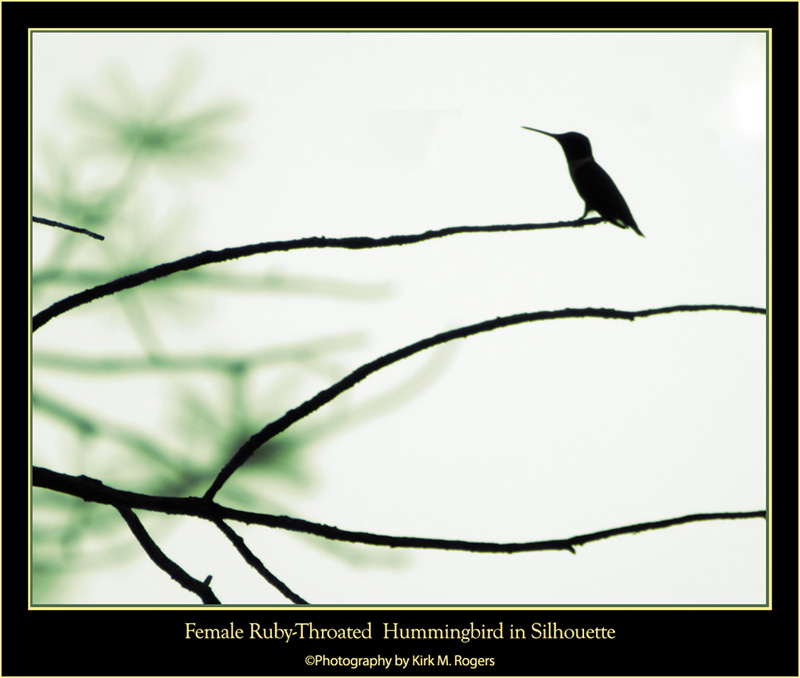
|
This was my first shot, as you can see it was directly behind a gray, overcast background. From what I’ve been reading, when the sky is like this don’t even think about having it for a backdrop because it always degrades the images to the point of making them unusable. You can shoot birds all day long on a cloud-covered day with other backgrounds however. Even if I could have made adjustments to try to expose this properly I most likely wouldn’t have been successful. I helped this image with some green in the background and fringed the bird a bit with it just a little. She appeared content to look us over for a time before moving on. |
|
This flight image is most likely the same bird although there were many individuals flitting about during the time I was watching for them so I cannot say with certainty.
I like this shot because it exhibits the amount of stretch in her wings, actually covering her eye before the backstroke and the tail is always in motion serving as a rudder.
I had my Speedlight mounted but it can’t recharge quick enough in a series of shots, so if the first image isn’t ‘the one’ the following exposures should be okay but without fill flash.
This image was out of a series of about six taken as quick as the camera could fire. I’ve found the 5D to be fairly good in this regard. Some of these bursts were
approaching ten or twelve shots in the group and the download time from the buffer is quite rapid afterwards. I would recommend the fastest compact flash card you can
afford if this is the type of shooting you do because it can slow or even stop you while the buffer empties. This image was at 1/80 second.
|
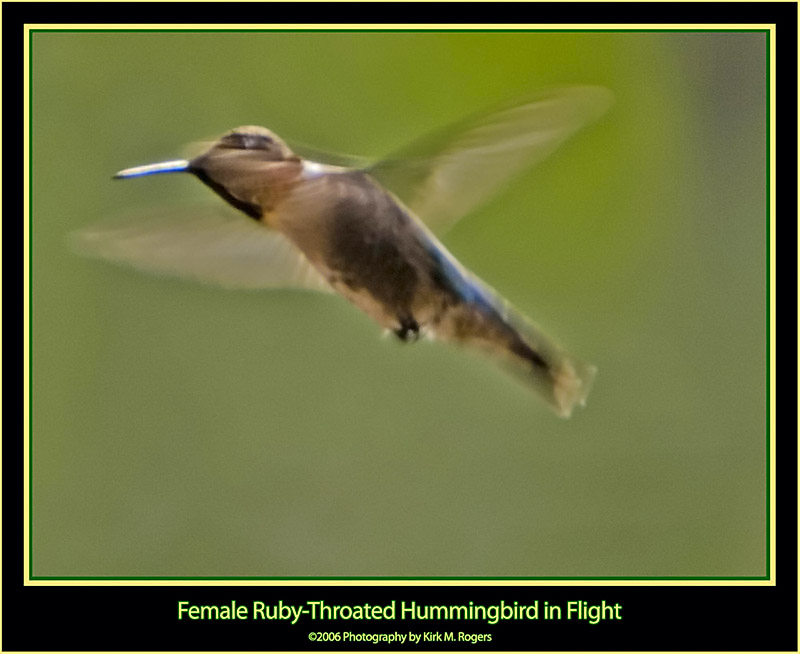
|
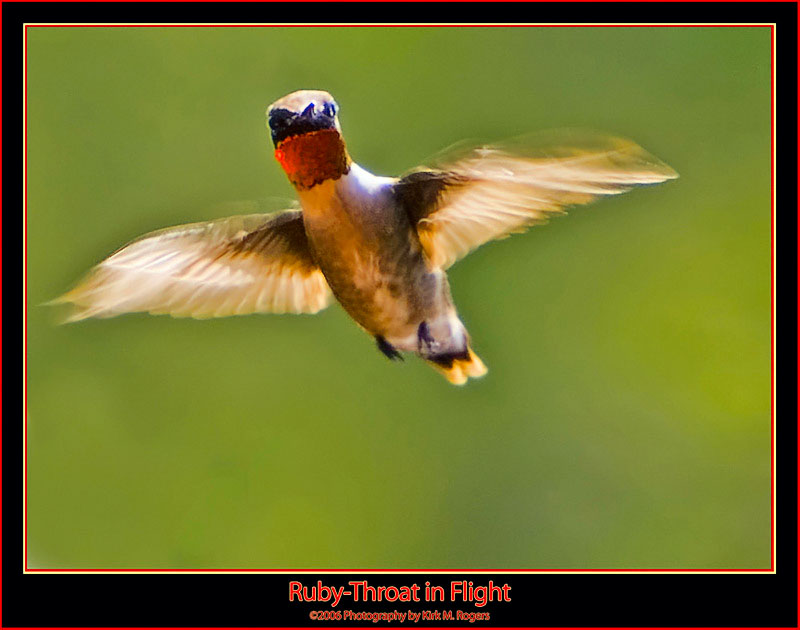
|
Can you tell what this Hummingbird is looking at? Yes, he was checking me out trying to figure out if it was safe to dodge in for a suck off the feeder.
This extremely short time he hovered provided all the opportunity I required to get off a burst. I’m pleased with the end result as can be viewed here.
I was about twenty or twenty-five feet away when this exposure was made. Looking at the camera LCD it’s difficult to ascertain if anything usable would
come out of the file or not. It looked even worse when first viewed in Camera Raw, but you can judge the end result for yourself. This image was at 1/100 second.
|
|
This image is from a separate burst then the one above. I found the end result of this enhancement pleasing as it really shows off the wing motion.
Again this bird was looking my way and did the split second hover to take a look in my direction allowing me to get off a series of exposures. This one was at
1/125 second.
|
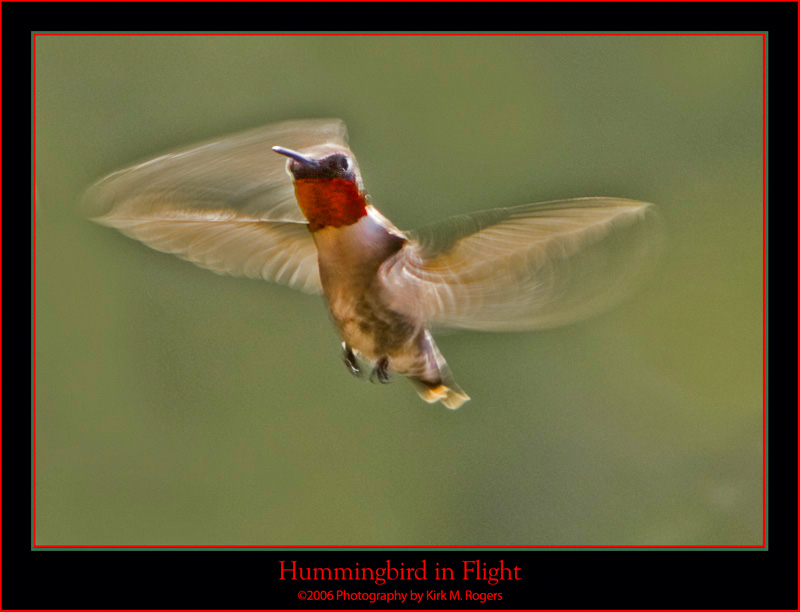
|

|
This is my favorite of the group. I can indicate with certainty that the master file of this image is significantly better than this web version. Plus, we have the benefit of seeing these beautiful birds in flight at larger than actual scale. The longer focal length of the lens provides a pleasing, blurred and blended background, at least for my taste and the wing motion is quite exquisite. This image was shot at 1/100 second. |

|
These images look much like the print finals on my primary enhancing monitor, a Planar PL2010 LCD. My computer was constructed recently and when built was outfitted to accommodate the larger files sizes I shoot in astronomy and nowadays in daylight. I keep this monitor calibrated regularly utilizing a ColorVision Spyder2 Pro system and imbed my profiles with the images. When viewing this page or similar with one of my laptops or in some instances, on other monitors at work, I can really notice how degraded and washed out they appear. These displays clearly do not do justice to the images. Any of you interested in photo enhancement, no matter what software you may be using, would do well to investigate a calibration system. This becomes even more of a challenge when printing the files to get a color match. I have found most people have their monitors set on the brightest setting no matter what monitor type they use.
In summary, this was my first attempt at shooting these wonderful creatures. I plan to revisit this location when nobody else or fewer people are around so I can experiment with various settings and perhaps try some stop action shots. Overall, I’m pleased with these results and think for a handheld session under the circumstances, this was a successful attempt.
Kiro
June 2006
_______________________________________________________________________________
New Shots! - Added July 2006
Over the 4th of July break I had an opportunity to image some more hummingbirds from the same location. This time however, I had my 1325 CF tripod and Really Right Stuff ballhead to support the camera in lieu of shooting handheld. The lighting wasn’t great and most of the shots were taken around midday when it was harsh and not the best for photography. I shot a burst whenever the birds provided an opportunity using the 70~200 f/2.8L lens with the 2X Extender. I changed location later and managed to get the Sun behind me, a significant improvement although I was below the feeder I was using for a draw. In my view, several of these as indicated below, are the best I’ve taken so far.
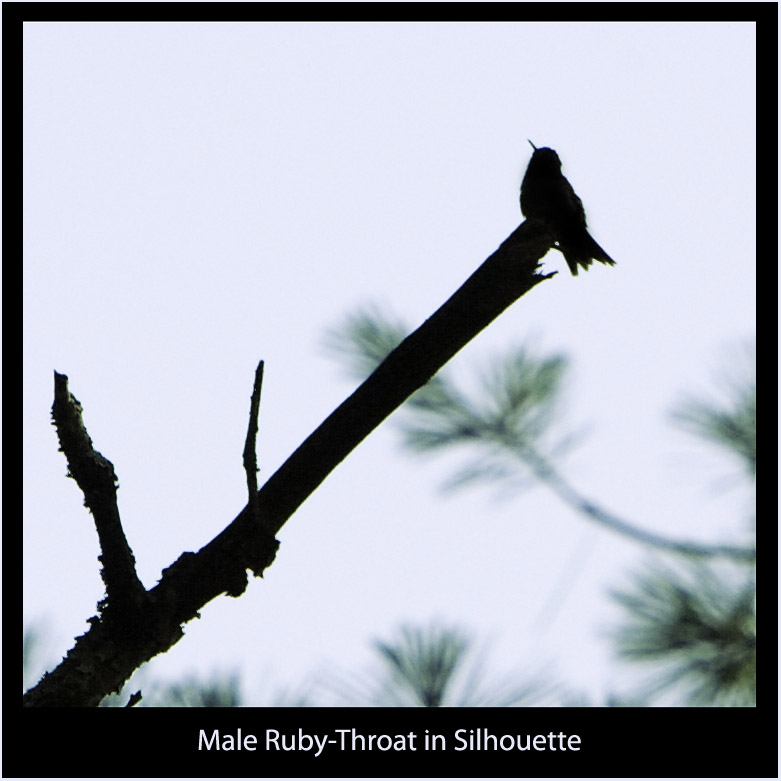
|
I was able to track one the males after he left the feeder. He flew up high over my head in a tree and announced his presence to all. I dismounted and handheld the camera and took a series of shots as he relaxed and enjoyed the day. Shooting against the sky made a nice silhouette of this hummingbird and I liked it enough to post it here. This image was shot in Normal Program, where I usually shoot wide open in Aperture Priority. It was taken at f/9, 1/640 second with an ISO rating of 200 at 400mm focal length. |
|
I thought this capture was terrific… Getting closer to the hummingbird helped with focus issues and after I exposed this shot, knew I nailed it but wasn’t sure on how the exposure would be.
I got the center autofocus square right on his eye for this photograph. These birds are always in motion and keeping them in the viewfinder is problematic enough without all the other
things to remember that can ruin your shot. This one was taken when the bird was away from the feeder and fairly close to where I was set up. I was able to produce a 13” X 12”
print of this image at 360 PPI; it is exceptional. I learned much the first time out; experience is indeed the best teacher if you can remember the lessons… This could be the same adult as
in the silhouette above, but it was taken at another time of the day.
This image was in Aperture Priority at 1/60 second; 400mm focal length at f/5.6, 200 ISO rating.
|

|
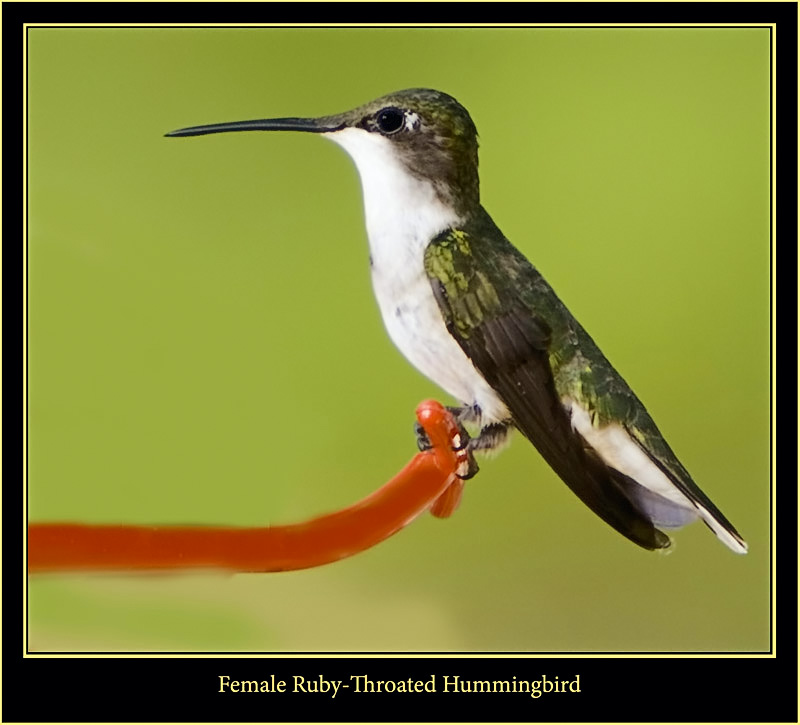
|
This female hummingbird was absolutely beautiful and came around several times during my session. At first she was a bit apprehensive, but overall these birds are rather fearless and adapt quickly once they recognize you present no threat. They even get fairly adapted to the sound of the camera firing after they’ve heard it enough times during the day. Shooting off an eight, ten or more burst is an unusually loud noise if they are near you. This lady hummie was significantly larger than any the other hummingbirds I viewed this day. She was also the only one to actually land on the feeder. I couldn’t believe my good fortune because I was in the perfect spot when she decided to alight for several seconds. The only negative I see with this image is that it would have been much nicer had she been sitting on a branch. I was tempted to exchange her perch in Photoshop, but decided it would be best to show the image as it was taken. I believe this photograph really captured the essence of this beautiful specimen. Aperture Priority at 1/60 second; 400mm focal length at f/5.6, 200 ISO rating. |
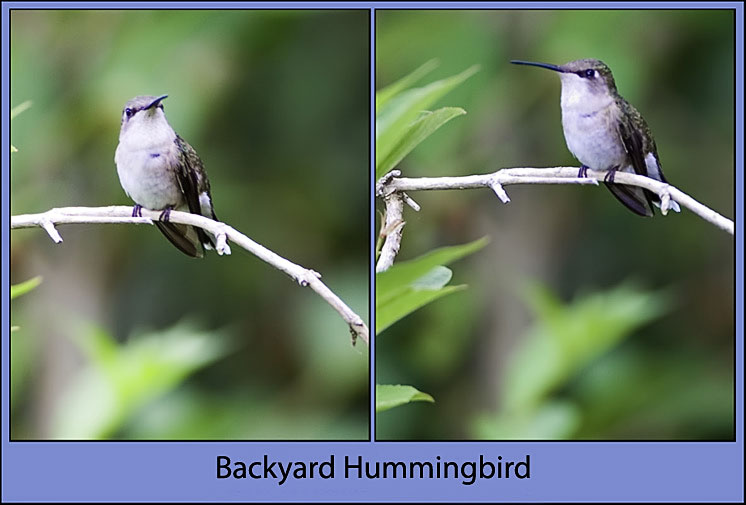
|